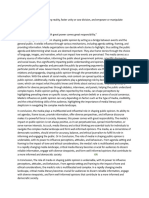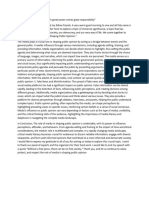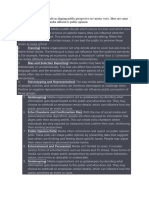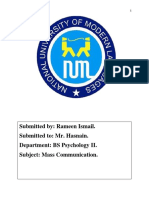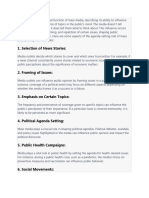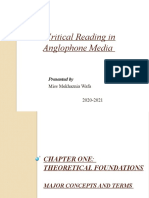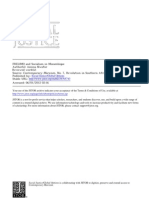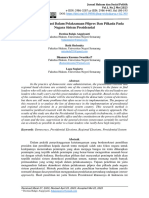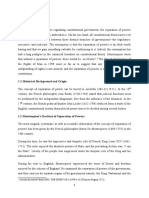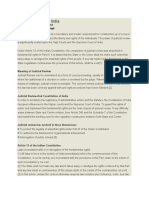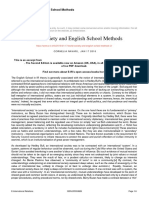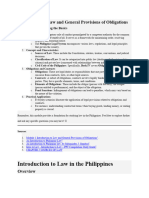The Role of Media in Shaping Public Opinion
The role of media in shaping public opinion is undeniable and carries profound implications
for societies worldwide. This essay takes a stand on how media influences public perception,
shapes discourse, and underscores the responsibilities inherent in media representation.
Media serves as a primary source of information and interpretation for the public, playing a
crucial role in shaping opinions on a wide range of issues—from politics and social issues to
entertainment and culture. Through news reporting, commentary, and entertainment
programming, media outlets influence how individuals perceive events, understand complex
issues, and form attitudes towards various societal phenomena.
Firstly, media acts as a gatekeeper of information, deciding which stories to cover, how to
frame them, and which perspectives to prioritize. This editorial discretion can significantly
impact public understanding and awareness of important issues. For example, media
coverage of political campaigns can influence voter perceptions of candidates' policies,
character, and suitability for office.
Moreover, media plays a pivotal role in agenda-setting, determining which topics receive
attention and prominence in public discourse. By highlighting certain issues and
downplaying others, media can shape public priorities and influence policy agendas. This
agenda-setting function is particularly potent in shaping public opinion on contentious
issues such as climate change, healthcare reform, and social justice.
Furthermore, media serves as a platform for debate and discussion, providing space for
diverse viewpoints and voices to be heard. Opinion pieces, editorials, and televised debates
facilitate public engagement with complex issues, fostering informed citizenship and
democratic participation. However, the influence of media on public opinion is not without
its challenges and ethical considerations.
Critically, media representation can perpetuate biases, stereotypes, and misinformation,
shaping public attitudes towards marginalized groups and reinforcing societal inequalities.
Portrayals of race, gender, sexuality, and socioeconomic status in media can either challenge
stereotypes and promote inclusivity or perpetuate harmful narratives and prejudices.
In light of these considerations, media organizations bear a responsibility to uphold ethical
standards of accuracy, fairness, and diversity in their reporting and programming.
Transparent sourcing, fact-checking, and adherence to journalistic principles are essential
to maintaining public trust and credibility.
Additionally, media literacy education is crucial in equipping individuals with the skills to
critically analyze media content, identify bias, evaluate sources, and discern between factual
reporting and opinion. By promoting media literacy, societies can empower citizens to
navigate the complexities of modern media landscapes and make informed decisions based
on reliable information.
�In conclusion, the role of media in shaping public opinion is pivotal and carries significant
responsibilities. Media influences public perception, shapes discourse, and plays a vital role
in democratic societies by facilitating informed citizenship and fostering public debate.
However, media's impact is not without challenges, including the potential for bias,
misinformation, and ethical lapses. By promoting ethical journalism practices, supporting
media literacy initiatives, and encouraging diverse representation, societies can harness the
positive potential of media while mitigating its drawbacks, ensuring that media continues to
serve as a cornerstone of informed democracy and civic engagement.


